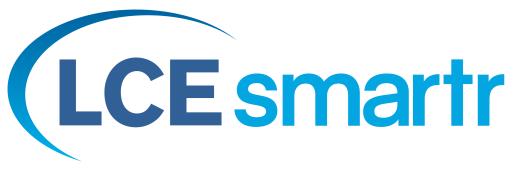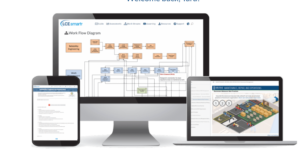Minnkota Improves Work Management, Planning and Scheduling with LCE
Minnkota Power Co-Op Improves Work Management, Planning and Scheduling
 Minnkota Power’s Milton R. Young Station began commercial operation in 1970 with one generating unit, adding a second generating unit in 1977. In 2012, Life Cycle Engineering (LCE), an industry expert in reliability engineering, was asked to conduct a business assessment of the Young Station. After speaking with several Minnkota employees, it was evident maintenance best practices had slipped over the years, resulting in a shift toward a more reactive maintenance philosophy. This is a common problem when formal documented work management processes do not exist, making it easy to abandon proactive practices whenever “minor” crises occur. When the overall perception of maintenance becomes a “fix-it-when-it-breaks” role, there is a sizeable barrier in changing that mindset and transitioning to a proactive maintenance philosophy – where the focus is more on ensuring equipment functionality and reliability, and reducing the need for breakdown repairs.
Minnkota Power’s Milton R. Young Station began commercial operation in 1970 with one generating unit, adding a second generating unit in 1977. In 2012, Life Cycle Engineering (LCE), an industry expert in reliability engineering, was asked to conduct a business assessment of the Young Station. After speaking with several Minnkota employees, it was evident maintenance best practices had slipped over the years, resulting in a shift toward a more reactive maintenance philosophy. This is a common problem when formal documented work management processes do not exist, making it easy to abandon proactive practices whenever “minor” crises occur. When the overall perception of maintenance becomes a “fix-it-when-it-breaks” role, there is a sizeable barrier in changing that mindset and transitioning to a proactive maintenance philosophy – where the focus is more on ensuring equipment functionality and reliability, and reducing the need for breakdown repairs.
In 2006, the co-op began using Oracle software to manage the plant’s assets, document maintenance activities and track asset performance history. However, because of time restrictions in getting the new system in place, Oracle’s capabilities were not fully implemented or utilized. Instead, Oracle was setup to mimic the functionality of the software it was replacing – leaving some powerful features of Oracle unavailable.
To help change the maintenance culture, the co-op teamed with LCE; first to conduct an assessment and then to assist with implementing improved work processes. The assessment scored both the work management and planning/scheduling of maintenance work in the reactive range and revealed that the maintenance coordinators (or planners) were acting as parts and material expeditors for the maintenance supervisors. This meant very little proactive planning was done for routine and preventive maintenance, and when it came to scheduling, it was often limited to the coordinators simply supplying work order crew tickets to the maintenance supervisors to assign at their discretion.
Data gathered from the business assessment was used to develop an action plan to implement improved work processes and facilitate a plant-wide culture change.
Understanding the barriers against improvement
The reactive situation in which the plant found itself was supported by technically skilled maintenance supervisors driving repair activities with limited input from production (i.e., operations) shift supervisors. Maintenance supervisors and technicians frequently planned their own jobs, secured their own parts and materials and expected the maintenance coordinators to be reactive expeditors of parts and labor for rush jobs. Forced into this reactive role, the coordinators were greatly restricted in their abilities to plan and assist in scheduling proactively. As a result, many times work was assigned before parts and other resources were even available. Although far from ideal best practice, the experience of these maintenance supervisors (many nearing retirement) was instrumental in keeping things afloat until mechanisms were in place to support change toward a more proactive and efficient maintenance style.
The plant used four work order priority codes, but in such a reactive state the majority of work was prioritized as either emergency (priority 1) or urgent (priority 2), with only a smattering of lower priority work. The general feeling among plant employees was if a work order wasn’t a priority 1 or 2 then there was slim chance it would ever get done; an extensive backlog of over 3,000 open work orders supported that assumption. What compounded the situation was the troublesome practice of technicians (and others) not consistently closing out work orders in the asset management system (i.e., Oracle) once a job was completed. This combination of a large, inaccurate backlog hindered the activities of the coordinators as they wasted valuable time shuffling through numerous work orders to find jobs still needing to be executed.
The proactive practices in place for asset care and delivering valued results included a precision maintenance program for rotating equipment and a dedicated crew of skilled technicians conducting specific predictive and preventive maintenance (PPM) activities. But, while scheduled PPM tasks were performed by the PPM team members, PMs done by personnel outside of the team weren’t always as well documented or scheduled. Many times the tasks were assigned and performed by a single employee, who was responsible for the procedure and schedule, and maintaining documentation of the task performed. This encouraged ownership of the asset and of the activity, but without the benefit of a backup to fill in if the employee was redirected from the PM task to more pressing activities – or worse yet, retired. As a result, the PM was often performed late, missed until the next PM cycle or sometimes completely forgotten.
The Young Station burns lignite coal extracted from a nearby surface mine. However, with optimal coal burning limited by strict regulations, boiler slagging and fouling issues often required excessive soot blowing to clean the boiler tubes. Tube erosion and wear from continuous fouling and cleaning cycles eventually leads to boiler tube weakness and leaks, forcing unplanned generating unit outages (often for multiple days) to make repairs. Some doubt was expressed whether a coal-fired electrical generating plant could achieve a proactive culture; especially since unlike a manufacturing facility creating a physical product, an electrical generating plant can’t easily be stopped and started to permit maintenance activities. This uncertainty in bridging the gap between a reactive and proactive culture is common, but continued management support and steady progress ultimately demonstrated this goal to be attainable.
Responding to the business assessment
LCE’s business assessment included a gap analysis, comparing current work management and planning/scheduling practices with industry best practices. Once the gaps were identified, a master plan was developed to create a structured approach to improving work management processes and implementing the recommended changes.
The approach was to build a Work Management Focus Team, selecting team members and a team leader from a cross section of the employee workforce along with a team sponsor (i.e. plant superintendent) to eliminate barriers and supply resources. LCE provided subject matter experts (SMEs) to guide the team and define a series of activities needed to achieve specific milestones that would support the implementation of work management best practices. In the first phase of the project, focus team members received training on work management, planning and scheduling best practices. In the second phase, the team developed a charter to clarify understanding of the team’s goals, the activities required to achieve the goals and the expected benefits in implementing the best practices. In the final phase, the team developed and documented a series of best-practice work management processes.
The work processes were supported with a step definition and RASI chart, which provided details for each process task and the corresponding roles of responsibility. The RASI chart identified the person:
- Responsible for completing the task
- Accountable for ensuring the task is complete
- Supporting or providing task assistance, typically a SME
- Informed on the progress of the task
The project’s top priority was to establish structured guidelines to better equip the maintenance coordinators in planning and scheduling maintenance activities, ensuring planned work activities were executed as effectively and efficiently as possible. This goal required a drastic paradigm shift in employee activities and responsibilities. To facilitate and support the changes, the focus team received training from SMEs on how to help deliver the approved work processes to the workforce and verify implementation. The responsibility of actually implementing and setting the expectation that the processes were followed fell to the superintendents and supervisors, but to support them, the focus team also received training on developing follow-up reinforcement tools to audit the work processes – measuring and tracking process utilization and effectiveness. The Prosci® change management model was used to identify areas of resistance and reinforce the work management goals with the employees most affected by the work process changes.
Closing the gaps and creating a new path
Using data from the business assessment, LCE and the plant leadership team established an action plan to close the performance gaps. The focus team developed its team charter and began a current-state analysis of how it identified, approved, planned, scheduled and executed work activities and how work orders were closed out upon job completion. Using the information from the current-state analysis, the team identified barriers, issues and workarounds in current maintenance activities that resulted in non-value-added efforts by the maintenance technicians executing the equipment repairs.
The Work Management Focus Team developed a new matrix to assign work request priorities, expanding the priority code levels from four to six. Definitions for each priority provided guidance on when each was to be applied, along with expected completion times. This helped set parameters to accurately identify work requiring such expeditious attention that it wasn’t feasible for the coordinators to get involved. These 1 (emergency) and 2 (urgent) priorities clearly identified work requiring immediate action or expecting to be addressed within a couple of days. As a result of the new matrix, priority 1 and 2 work requests dropped by 22 percent within 90 days. This shift in work order priority established a backlog of identified work, made up of priority 3–6 work orders, which could be properly planned by the coordinators – where parts, materials and resources were kitted and available before the work was scheduled and executed. Shifting the prioritization of work requests to better plan and schedule corrective maintenance jobs increased the utilization of maintenance crafts and the execution of scheduled jobs.
As the co-op adopted expectations for improved work request information, the focus team began a weekly review using a random sampling of work requests. The team evaluated the requestor’s information to verify the problem was clearly defined, the priority was correct and the relevant information was accurate. The initial evaluations resulted in only 4 of 10 work requests containing sufficient and accurate information. As the team continued to evaluate and coach their co-workers, results improved to 8 of 10 sample requests containing the correct information.
Initially, it was not feasible for the plant to adopt a weekly schedule of planned work, so it began simply with next-day scheduling. The expectation was that the shift supervisor (acting as meeting facilitator), maintenance supervisors and maintenance coordinators attend a daily scheduling meeting – where they reviewed new break-in work, jobs ready to be executed and expected manpower resources for the next day. After sharing and reviewing the available information, a jointly agreed upon maintenance schedule was established and ready for execution the following day. In 2013, the plant purchased Viziya, a scheduling application that effectively interfaces with Oracle. As maintenance became more comfortable with scheduling and a clearer understanding of Oracle and Viziya capabilities was gained, the plant shifted to week-ahead scheduling.
To support the maintenance supervisors and optimize work management efficiency, the maintenance coordination staff was increased from three to seven – with their chief responsibility to fully concentrate on building a “ready work” backlog of future PM and corrective work activities. This backlog forms the backbone of the weekly maintenance schedule and ideally includes: planned jobs ready to be executed and parts kitted and ready for delivery to the work site. To free up maintenance supervisors from nonsupervising duties, many of their construction and capital project responsibilities were handed over to project managers – leaving the supervisors to focus on maintaining their schedule and planning the priority 1 and 2 reactive jobs that were shifted away from the coordinators. Operations, the drivers of plant reliability, are directly involved in building the schedule – ensuring equipment most critical to electrical generation is high on the agenda. In addition, all PM activities are undergoing progressive structuring to ensure optimal asset care and schedule compliance. And finally, the continued development of key performance indicators (KPIs) is enabling the measurement of work management process efficiency and expected future reliability. A recent KPI report indicated priority 1 and 2 work orders constituted 20 percent of the total work orders created; much lower than the 60 percent they were at a few short years ago.
Improved work management, planning and scheduling at the co-op was achieved by implementing standard work processes and standardizing how maintenance work was prioritized. The foundation set in place for better management of maintenance activities supports the culture change needed to sustain continuous improvement and drive positive performance trends. As with any organization in the coal industry, challenges are ahead, but building an efficient and effective proactive maintenance program is a vital step in securing plant reliability and future success. The plant still has a long road ahead, but the joint efforts of Minnkota and Life Cycle Engineering have established a clear roadmap to guide the journey forward.
Additional Information
For more information about improving operational and financial performance, please email us at info@LCE.com or visit www.LCE.com.
















